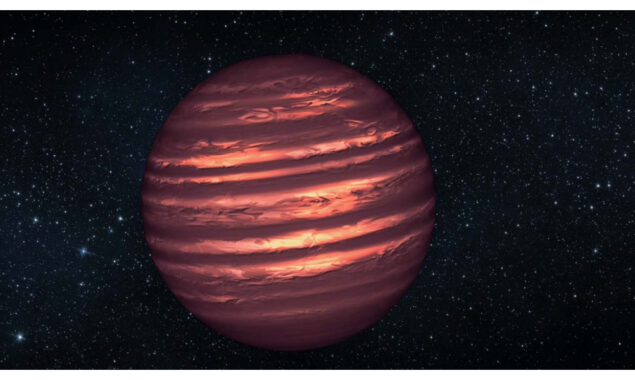
Imagine travelling through a dense, foggy fog in the dead of night, seeing patches of light from cars and towns glimmering far away. It’s difficult to tell if the lights are deep within the fog or beyond it. Astronomers looking for newborn stars confront a similar problem: the light from the stars they’re looking for shimmers through vast molecular clouds of murky gas and dust in space.
However, the centers of these clouds are frequently breeding sites for newborn stars and planets, making them ideal locations for astronomers trying to figure out how celestial bodies form—assuming they can see through the haze.
Now, a group of astronomy researchers at Boston University has devised a low-cost method of cutting through the fog. They’ve devised a novel way for measuring the haziness of the dust cloud and detecting the presence of planet-forming structures known as protoplanetary discs, which are gas and dust discs that exist around young stars and provide the material for planet formation. They utilized this method to get a closer look at the insides of a molecular dust cloud in the Taurus constellation, which is 450 light-years away from Earth. A two-star system exists there, with their protoplanetary discs still present and possibly in the process of forming several new planets.
“We’re effectively trying to see what these stars are doing through the fog of the cloud; they’re like flashlights shining through the cloud,” says Dan Clemens, chair of the College of Arts and Sciences’ astronomy department and lead author of a paper describing the techniques used to get a closer look at the stars’ planet-forming discs. The Astrophysical Journal published their findings.
Scientists don’t know how stars and planets form—though they do know some of the ingredients, such as gas, dust, gravity, and magnetic fields—so studying systems like this can help them figure out how the process works. Every half-million years, a young, low-mass star and a brown dwarf orbit each other in the Taurus cloud
When Anneliese Rilinger, a fifth-year graduate student in BU’s astronomy department, began researching the star system using radio waves collected by the Atacama Large Millimeter Array (ALMA), the world’s biggest radio telescope, the BU team first looked at the discs in the Taurus cloud. Rilinger and Catherine Espaillat, a CAS associate professor of astronomy and coauthor on the current article, had previously published a research looking at the discs around the stars and undertaking thorough modelling of the disc structures.
Her work with radio waves piqued Clemens’ interest, so he and the rest of his team, which included Rilinger, Espaillat, and BU senior research scientist Thushara Pillai, set out to test Rilinger’s observations of the same system using near-infrared light, which has a shorter wavelength than radio waves and is just beyond what the human eye can detect on its own. They intended to show that alternative—and thus more accessible—tools might be used to accurately model disc locations.
The light that the stars release is polarized (meaning the light waves go in multiple directions). However, due to the characteristics of the dust grains and the magnetic field inherent in the cloud, light travels through the thick molecular cloud and gets polarized (light waves oscillate in one direction). The researchers measured the polarization of light flowing through the cloud using a near-infrared polar meter at BU’s Perkins Telescope Observatory. The researchers were able to see the signatures of the stars by measuring the polarization, which revealed the orientation of the discs. The problem then became determining how to remove the effects of the surrounding cloud in order to determine the exact nature of the light coming from the stars and show their position.
The scientists confirmed that the near-infrared polarization data matched the radio wave data, demonstrating that protoplanetary discs may be measured without the use of large-scale instruments like ALMA. Their research also revealed an intriguing feature of the system: the discs are aligned in an unusual way, parallel to one another and perpendicular to the magnetic field of the bigger cloud. Protoplanetary discs frequently rotate parallel to the magnetic field of the dust cloud, making this a unique environment that allows researchers to learn more about how discs produce planets.
“Developing the understanding of how to eliminate the cloud contributions from the intrinsic polarizations of stars and young stellar objects—that has never been done before—was exhilarating and such a challenge,” Clemens explains. “The near-infrared polarimetry we used provided us with a unique perspective on the discs, as well as the capacity to see deeply into these optically opaque regions where new stars are developing,” said the team. Their methods could be used to look for discs and determine their orientations in other deep space regions.
The brown dwarf and young star in the Taurus cloud appear to have lower-mass companions that straddle the line between becoming a planet and maybe another brown dwarf, even if they are still in the process of producing planets. Planets are projected to emerge in their piece of space over the next five million years.
Read More News On
Catch all the Sci-Tech News, Breaking News Event and Latest News Updates on The BOL News
Download The BOL News App to get the Daily News Update & Follow us on Google News.




